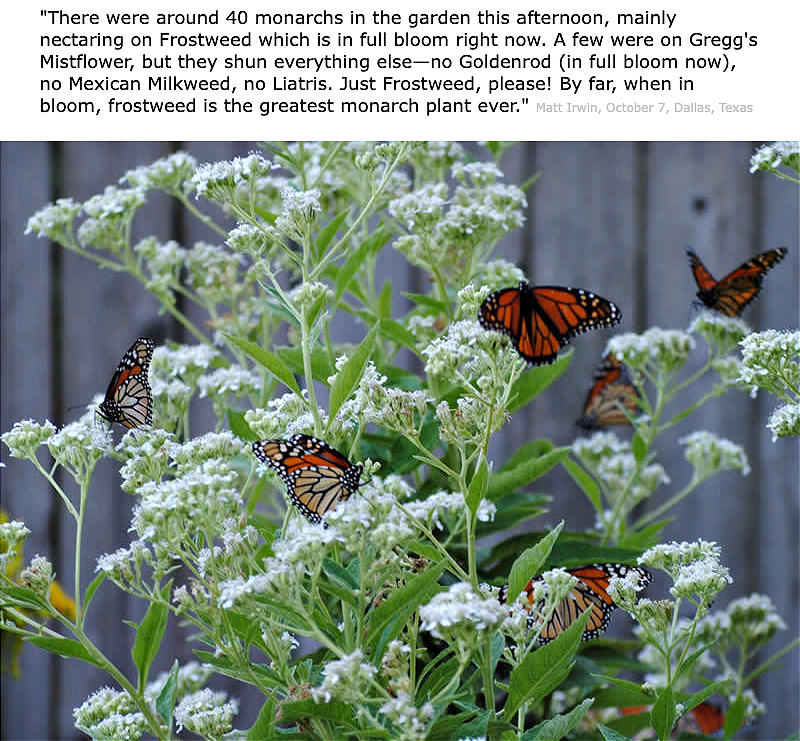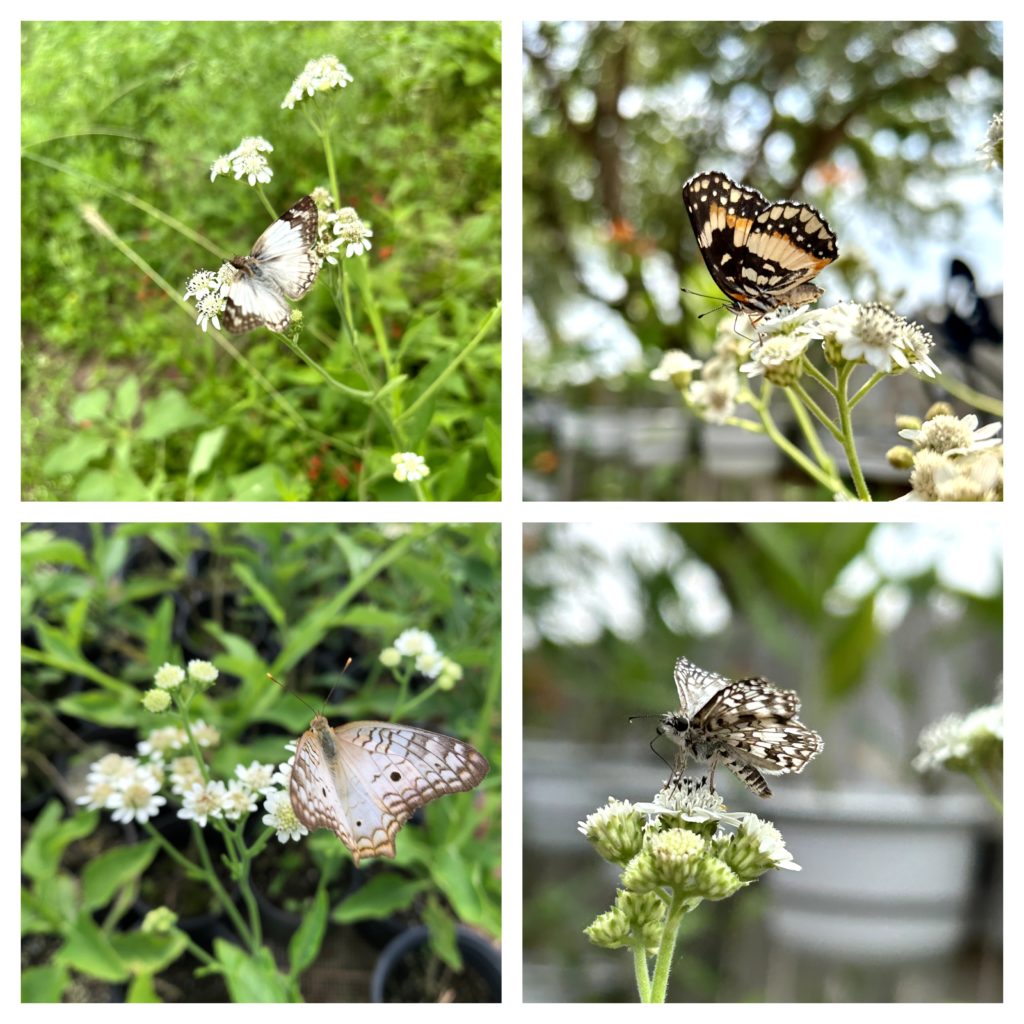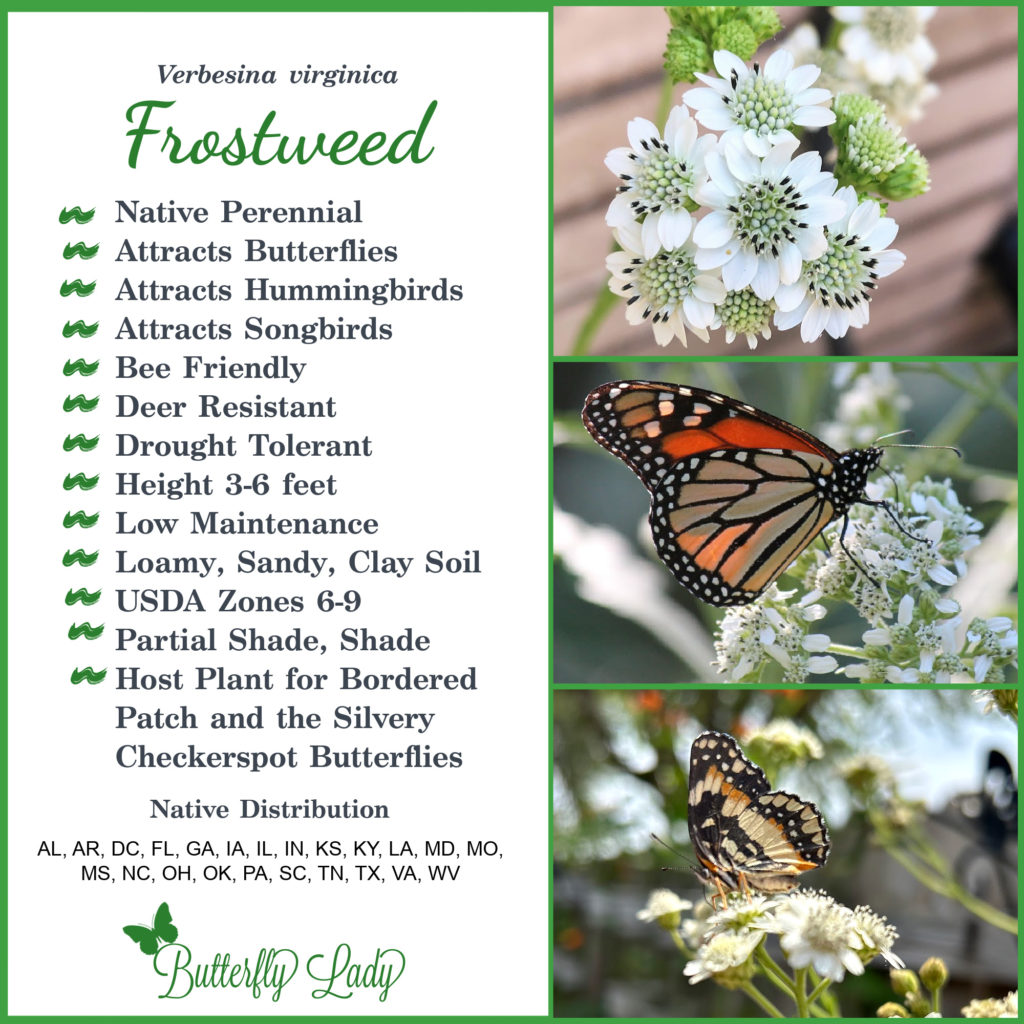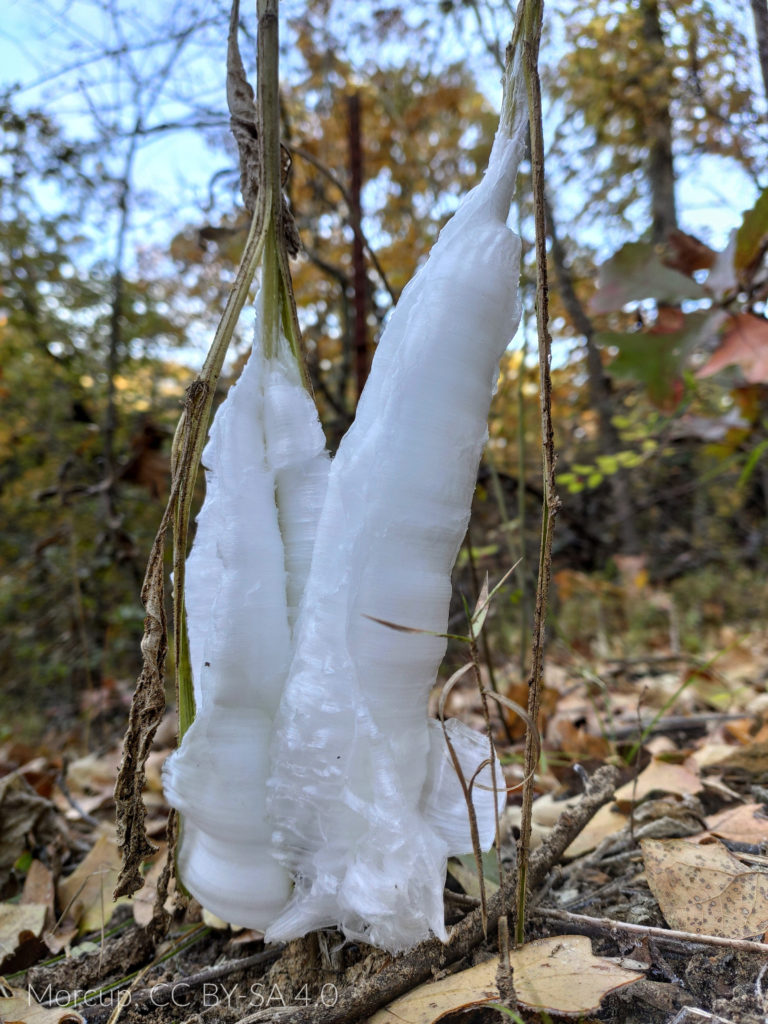According to Monarch Watch, Frostweed (Verbesina virginica) is a major fall-blooming nectar source for monarchs. By fall it’s usually at least three feet high and has dense clusters of snow-white flowers. Blooming typically coincides with peak migration.

The blossoms are also attractive to many other species of butterflies, bees, and other pollinators. It is the host plant for the Bordered Patch (Chlosyne lacinia) and the Silvery Checkerspot (Chlosyne nycteis) butterflies.

Native to the Southeastern United States and Texas, Frostweed is perennial throughout USDA zones 6-9. Reaching an average height and spread of about 3 feet, this plant is ideal for cottage gardens, background plantings in shady garden borders, or naturalized in wooded areas.

The name “Frostweed” is a reference to the plant’s tendency to excrete water from its stems in freezing weather, thus enhancing the winter landscape with the creation of interesting ice sculptures. Frostweed (Verbesina virginica) it is also known by other names including White Crownbeard, Indian Tobacco, Iceplant, Iceweed, Richweed, Squaw Weed, White Wingstem, and Virginia Crownbeard.

Growing tips: Frostweed prefers dappled shade where it can form sizable colonies, like at the edge of a woodland or just under a large tree. Plant your Frostweed in a naturalized area where it can get dry to moist soil. It will grow from 2’-6’ tall with little to no maintenance, irrigation or pest control. If you plant it in a dryer and sunnier space you will tend to get smaller and more compact bushes with more flowers. You can also promote more fall blooms by cutting back the plant in mid-summer.
